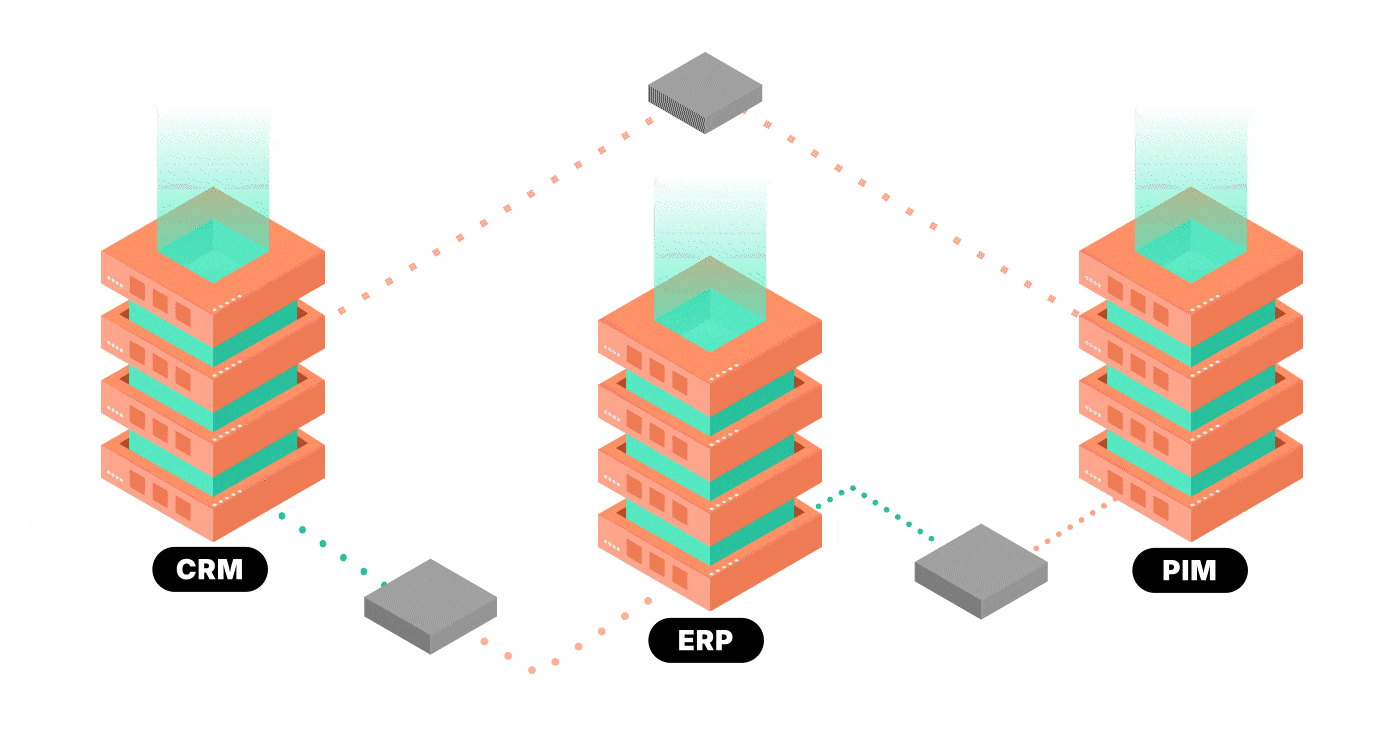Middleware Mastery: Getting a Handle on Your Data

The problem? Data silos. Despite best efforts, silos tend to form naturally due to the complexities of transferring data between different systems of record. The result? Broken data leads to broken processes.
The Problem with Data Silos

No one sets out to create data silos, but they often arise as businesses grow and adopt new technologies. Sales opportunity data lives in the CRM, part information resides in the PIM, and financials are locked away in the ERP. These systems of record are crucial, but they’re often disconnected. Business processes that rely on data from multiple systems can grind to a halt when data transfer is slow or incomplete.
When data isn’t flowing seamlessly between your CRM and ERP or your PIM and CMS, inefficiencies crop up. This friction often stems from data format incompatibility, mismatched structures, or difficulties in linking and normalizing datasets. Over time, these challenges compound and slow down your ability to respond to customer needs, fulfill orders, or optimize supply chains.
Middleware: The Connective Tissue

This is where middleware comes in. Middleware acts as the connective tissue between business processes, seamlessly linking disparate systems to ensure smooth data flow across the entire organization.
But middleware is more than just a data bus. Robust solutions like Orbweaver do much more than simply transfer data—they transform it.

By handling data transformation, middleware extends beyond basic integration. It allows businesses to implement intelligence, analytics, and value-added processes directly within the data flow. This means that not only are data silos eliminated, but new insights and efficiencies can be unlocked in real-time as data moves through your systems.
How Middleware Impacts Your Business Efficiency
By linking different processes—like CRM, ERP, and supply chain management—a middleware ensures that data moves seamlessly between departments, accelerating decision-making and reducing errors. This automation not only keeps data up-to-date but also allows businesses to respond faster to market demands, driving greater operational agility.
Additionally, middleware enhances the utility of data by transforming and normalizing it as it flows between systems, ensuring it’s fully optimized for use across the organization. This streamlined data handling leads to faster time-to-market, more responsive supply chains, and ultimately, increased revenue with lower costs. In short, middleware is the engine that drives efficiency, scalability, and profitability in today’s data-driven world.
Conclusion
Middleware is more than just a technical solution—it’s a catalyst for business transformation. By automating, connecting, and enhancing the way data moves through your business, it eliminates inefficiencies, speeds up processes, and reduces costs. In a world where every second counts, middleware is the key to unlocking the next level of business efficiency, paving the way for growth, agility, and sustained success.
By breaking down data silos and implementing intelligent middleware solutions like Orbweaver, businesses can unlock the full potential of their data—driving efficiency, improving decision-making, and ultimately boosting their bottom line.
